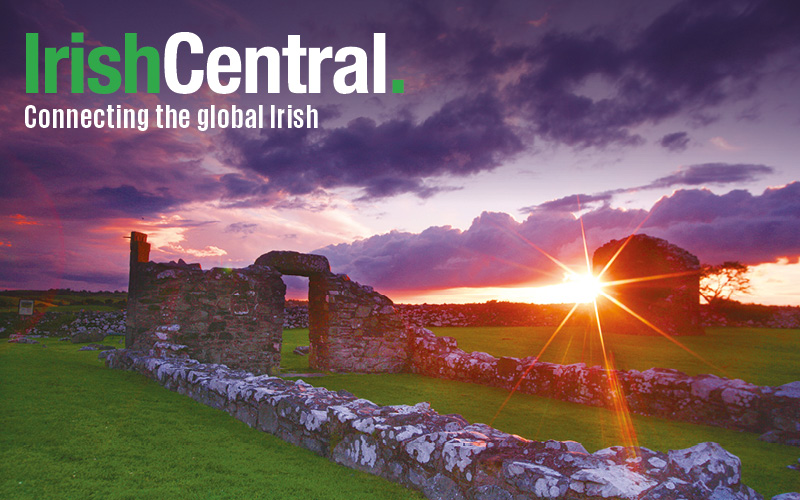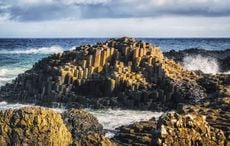There were 103 ballots before a winner was chosen as William McAdoo, the Klan’s candidate and Al Smith, the lower east side Irish Catholic, clashed repeatedly in the longest political convention in American history.
It is incredible that in 2016 Donald Trump, who was very slow to disavow the Klan, is quite likely to be part of a brokered convention as heavyweights in the party seek to stop him.
Read more: Donald Trump's KKK embrace defended by Fox's Bill O'Reilly
In 1924 New York was chosen as the site for the first time since 1868 because wealthy New Yorkers badly wanted it there “to convince the rest of the country that the town was not the red-light menace generally conceived by the sticks."
McAdoo was the hot favorite going in as the revitalized Klan put all their weight behind him to stop the Irish Catholic. There were often violent clashes between the two sides. So many Klan members attended that thousands held what became known as a Klanbake in a field in New Jersey across the river from the convention site.This event was attended by hundreds of Klan delegates to the convention, who burned crosses, urged violence and intimidation against African Americans and Catholics, and attacked effigies of Smith.
Back at the convention hall Franklin D Roosevelt, launching his political comeback after a serious illness, placed Smith’s name into nomination.
Al Smith was 41 at the time. He was raised in the Fourth Ward on the Lower East Side of Manhattan and it was here he would spend his entire life. His four grandparents were Irish, German, Italian, and Anglo-Irish,but Smith identified with the Irish American community and became its leading spokesman in the 1920s.
The first day of balloting (June 30) brought the predicted deadlock between the leading aspirants for the nomination, William G. McAdoo of California and Gov. Alfred E. Smith of New York, with the remainder divided mainly between local "favorite sons."
McAdoo was the leader from the outset, and both he and Smith made small gains in the day's fifteen ballots, but the prevailing belief among the delegates was that the impasse could only be broken by the elimination of both McAdoo and Smith and the selection of one of the other contenders; much interest centered on the candidacy of John W. Davis, who also increased his vote during the day from 31 to 61 (with a peak of 64.5 votes on the 13th and 14th ballots). Most of the favorite son delegations refused to be stampeded to either of the leading candidates and were in no hurry to retire from the contest. McAdoo was the leader from the outset with 40 percent and Smith had 22 percent. No one else was above five percent.
There was some excitement on the tenth ballot when Kansas abandoned Gov. Jonathan M. Davis and threw its votes to McAdoo. There was an instant uproar among McAdoo delegates and supporters and a parade was started around the hall. The Kansas standard led and those of all the other McAdoo states followed along behind. Pictures of "McAdoo, Democracy's Hope" were lifted up.
After six minutes the chairman's gavel brought order and the roll call resumed, and soon the other side had something to cheer, when New Jersey made its favorite son, Gov. George S. Silzer, walk the plank and threw its votes into the Smith column. This started another parade, the New York and New Jersey standards leading those of the other Smith delegations around the hall while the band played "Tramp, Tramp, Tramp, the Boys are Marching."
With the party split into two assertive parts, the rule requiring a two-thirds majority for nomination crippled the chances of both candidates by giving a veto each could – and did – use. McAdoo himself wanted to drop the two-thirds rule, but his Protestant supporters preferred to keep their veto over a Catholic candidate, and the South regarded the rule as a protection of its interests. At no point in the balloting did Smith receive more than a single vote from the South and scarcely more than 20 votes from the states west of the Mississippi; he never won more than 368 of the 729 votes needed for nomination, though even this performance was impressive for a Roman Catholic.
McAdoo and Smith each fashioned a strategy designed to build up his own total slowly. Smith's trick was to plant his extra votes for his opponent, so that McAdoo's strength might later appear to be waning; the Californian countered by holding back his full force, though he had been planning a strong early show. But by no sleight of hand could the convention have been swung around to either contestant.
In desperation. Daniel C. Roper even went to Franklin Roosevelt, reportedly to offer Smith second place on a McAdoo ticket. For their part, the Tammany men tried to prolong the convention until the hotel bills were beyond the means of the outlanders; the Smith backers also attempted to stampede the delegates by packing the galleries with noisy roosters. Senator James Phelan of California, among others, complained of "New York rowdyism." But the rudeness of Tammany only steeled the resolution of the country delegates. McAdoo and Bryan both tried to reassemble the convention in another city, perhaps Washington, D.C. or St. Louis.
Various compromise candidates came and went until eventually on the 103rd count John Davis emerged successful. Davis was a compromise candidate, chosen on the 103rd ballot after the withdrawal of Smith and McAdoo. Davis had never been a genuine dark horse candidate; he had almost always been third in the balloting, and by the end of the twenty-ninth round he was the betting favorite of New York gamblers. There had been a Davis movement at the 1920 San Francisco convention of considerable size; however, Charles Hamlin wrote in his diary, Davis "frankly said ... that he was not seeking [the nomination] and that if nominated he would accept only as a matter of public duty."
Davis felt the party had been irreparably damaged and indeed it was. Calvin Coolidge swept in that Fall with a runaway victory.
Al Smith was back again in 1928 and was chosen as the Democratic candidate, but overwhelming anti-catholic nativism ensured a heavy defeat.
No Irish Catholic would come as close as Al Smith had until John F. Kennedy thirty two years later. 1924 was also a last high point for the Klan whose influence diminished greatly afterwards.
Franklin Roosevelt would go on to heal the shattered party and win three terms. He never fully acknowledged the debt he owed Al Smith for his political comeback and the two men rarely spoke.
In the atmosphere of a contested convention in 2016 many will look back to 1924. it hardly seems possible it could happen again, but this has been a surprising, even shocking, year to say the least.




Comments